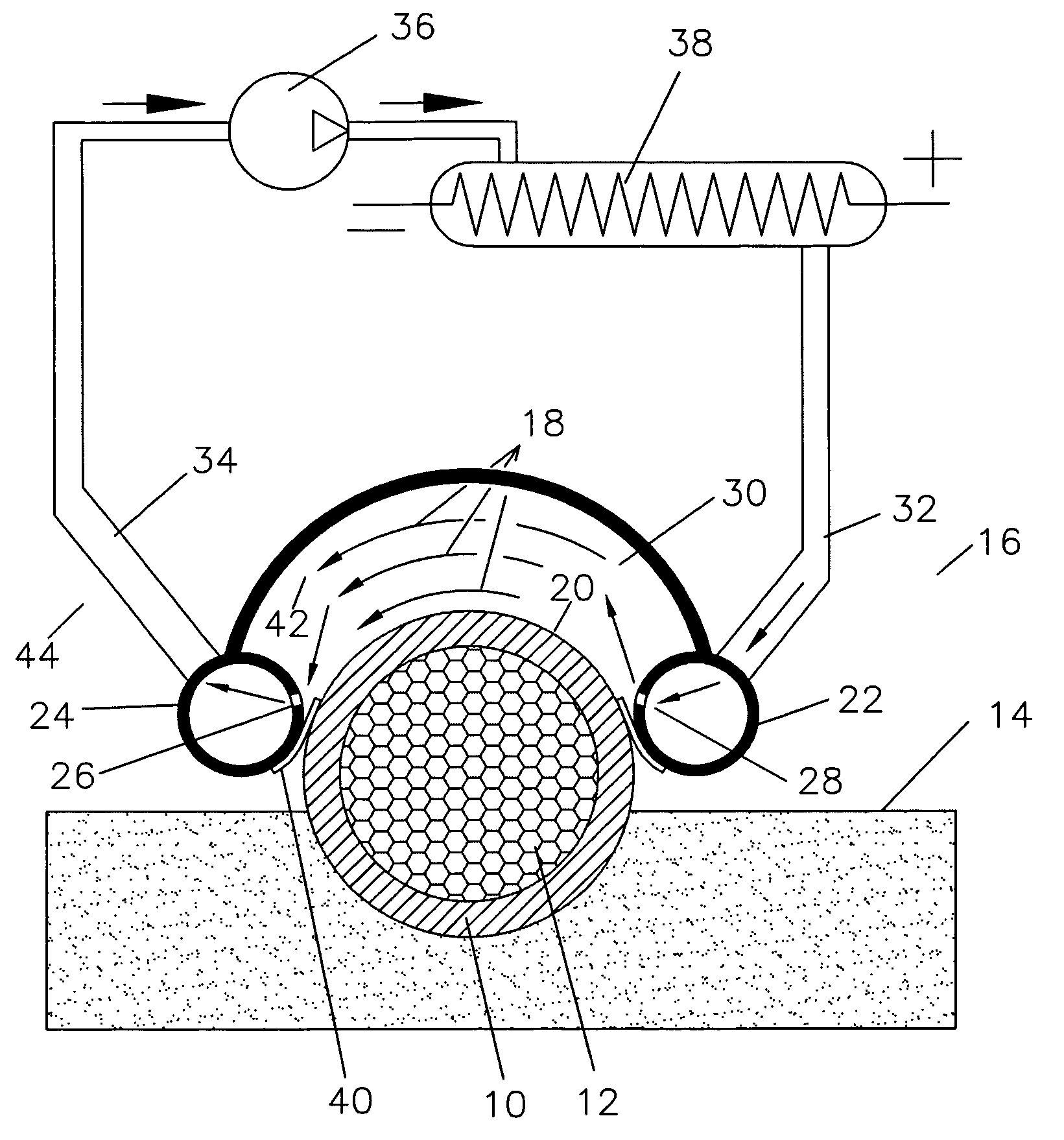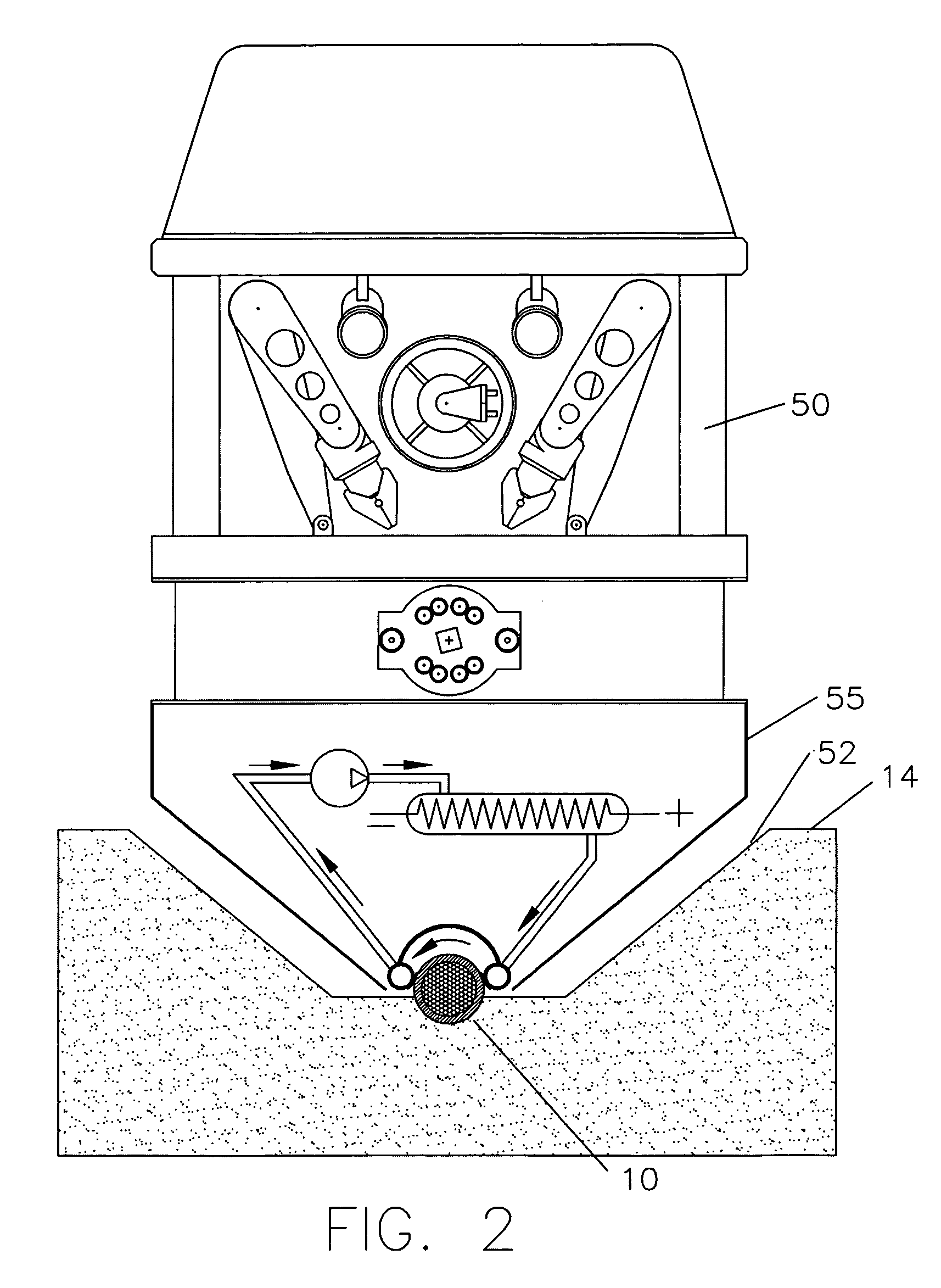Subea pipeline blockage remediation method
a technology for subea pipelines and remediation methods, applied in the direction of manufacturing tools, borehole/well accessories, insulation, etc., can solve the problems of increasing the temperature of seawater outlet, increasing the cooling, and literally continuing to grow additional hydrate blockage, so as to minimize the disturbance of the pipeline and increase the outlet temperature of seawater
- Summary
- Abstract
- Description
- Claims
- Application Information
AI Technical Summary
Benefits of technology
Problems solved by technology
Method used
Image
Examples
Embodiment Construction
[0028]Referring now to FIG. 1, a subsea pipeline 10 has a blockage indicated at 12. The subsea pipeline 10 is setting on the seafloor 14 and is covered by seawater 16 which may be as cold as 32° F. Arrows 18 indicate the flowing of heated seawater across the upper portion 20 of the subsea pipeline 10 for the purpose of disassociating the pipeline blockage 12. The disassociation may be melting a hydrate, melting a paraffin blockage, or softening a paraffin blockage to the point that it will flow.
[0029]Two tubes 22 and 24 run parallel to the subsea pipeline and have a plurality of holes 26 and 28 which direct heated seawater into the circulation chamber 30 or out of the circulation chamber 30 respectively. Line 32 feeds heated seawater into tube 22 and return line 34 draws the seawater out of tube 24. The return line 34 leads to pump 36 and then to heating element 38 and back to tube 32. The heated seawater which is introduced into the combustion chamber by tube 22 is somewhat cooled ...
PUM
| Property | Measurement | Unit |
|---|---|---|
| temperature | aaaaa | aaaaa |
| temperature | aaaaa | aaaaa |
| electrical resistance | aaaaa | aaaaa |
Abstract
Description
Claims
Application Information
 Login to View More
Login to View More - R&D
- Intellectual Property
- Life Sciences
- Materials
- Tech Scout
- Unparalleled Data Quality
- Higher Quality Content
- 60% Fewer Hallucinations
Browse by: Latest US Patents, China's latest patents, Technical Efficacy Thesaurus, Application Domain, Technology Topic, Popular Technical Reports.
© 2025 PatSnap. All rights reserved.Legal|Privacy policy|Modern Slavery Act Transparency Statement|Sitemap|About US| Contact US: help@patsnap.com



